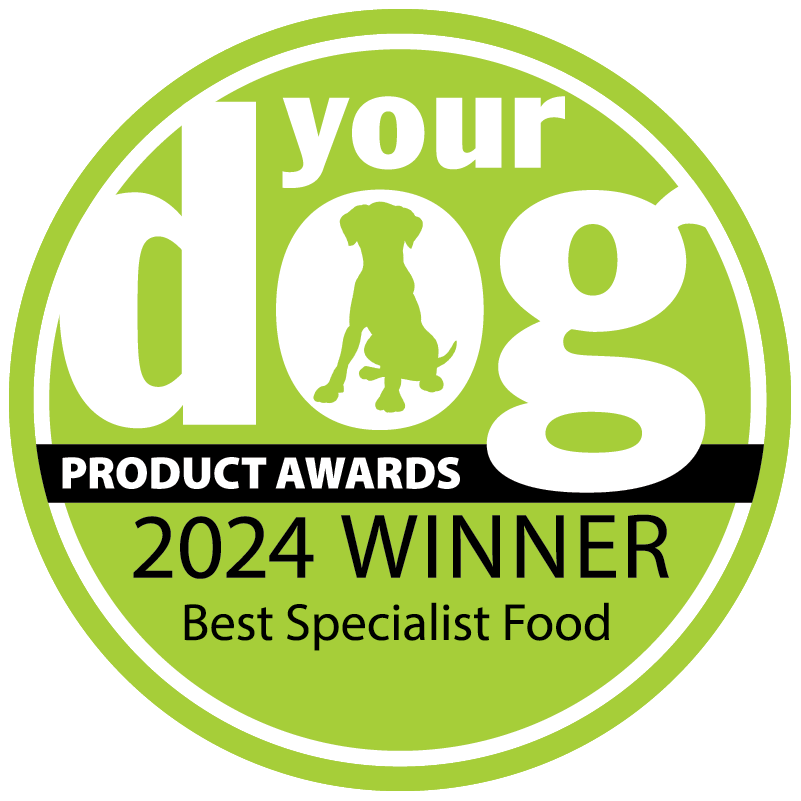
Giving your pup a little bit too much food is easily done – whether you’re unknowingly overfilling their bowl or slipping them too many treats for being cute – but doing so can be disastrous for their health.
Overfeeding can lead to serious health consequences like heart disease, diabetes, arthritis and reduced lifespan so it’s important to keep an eye out for troublesome symptoms that your dog is eating too much.
Here John Burns, veterinary surgeon and founder of Burns Pet Nutrition, looks at 10 tell-tale signs that you are overfeeding pets:
It may sound obvious, but the simplest way to tell if your dog is eating too much is to check their waist. Body weight alone is not the only indicator whether your pet is overweight so it’s important to look at their overall shape and take a ‘hands on’ approach. A healthy dog’s waist should be clearly visible from above (look for an hour-glass shape) and you should be able to easily feel their ribs, hips and spine. Being able to see the last couple of ribs when a dog is moving is indicative of the perfect weight.
If you have to press to feel the ribs or the waist is barely visible, this means that there is a layer of fat covering them and your dog is likely to be overweight. While owners often worry more about seeing their dogs’ ribs than extra weight, there are more health problems associated with dogs being overweight than lean.
We often hear pet owners say that they cannot be overfeeding their pets as they are not overweight, but this isn’t necessarily the case. Over-nutrition can cause health problems other than excessive weight gain including loose stools, abdominal discomfort and swelling. Overfeeding puts more demands on the digestive system and reduces its efficiency, subsequently resulting in upset digestion. A very common symptom of overfeeding is when a dog’s bowel movement is normal in the morning but soft at night.
While some breeds appear to be more prone to gas, experiencing frequent gas that is out of the ordinary in terms of smell usually suggests something isn’t quite right in their system. As feeding too much of even the right foods can lead to issues in the digestive tract, overfeeding can often result in issues with flatulence.
A common misconception is that constant moulting is ordinary and something that dog owners just have to put up with. As the body’s way of discharging waste and preparing for a new season, moulting once or twice a year is normal, but additional shedding between this is not. Persistent moulting, along with a range of other common skin and coat problems, like obsessive grooming, feet chewing, balding patches and skin eruptions, is indicative of excess waste in the system that the dog is trying to eliminate. A build-up of toxic waste in the body can be caused by food intolerances, excessive intake of fat or protein, poor-quality food and/or overfeeding. Once you hit the right feeding amount (of the suitable food), you’ll find moulting will stop.
Regular scratching is often the first sign that things are going wrong in a dog’s system, highlighting issues with nutrition. Common causes are an allergic reaction to certain ingredients, poor diet and, you guessed it – overfeeding. Even with good quality food, too much food contributes to the toxic burden of the system which causes problems like dry skin and itching. If your vet rules out a medical cause for itching, and you are sure that you are feeding your dogs the correct amount, your dog may have a sensitive digestion which requires a specific type of diet.
There are several misconceptions around poo eating. Firstly, that it’s a sign of something lacking in a dog’s diet, and secondly, that dogs do it because they are hungry, leading to owners mistakenly giving them more food. In reality, ingesting faeces, either their own or that of another dog or animal, is actually linked to underlying health issues. Most often it is a symptom of an issue with the digestive system. While some dogs show obvious signs of digestive upset such as loose stools, for many, the only indication is poo eating.
Dogs that carry a few extra pounds may experience the same health problems as overweight people, like heart disease or diabetes. Just like humans, extra weight can also strain your dog’s joints, causing pain and potentially leading to arthritis.
Tear staining is usually seen in small and toy breeds with light coloured coats and is characterised by runny eyes where the tears stain the hair on the face a pinkish-brown colour. While it’s more common in certain dogs, the idea that it is a breed-specific problem or merely a cosmetic issue is a myth. Tear staining is triggered by a build-up of toxic waste, often caused through over-feeding, and commonly accompanied by other health problems. It can be successfully eliminated with correct nutrition and portion sizes.
Although a frustratingly vague symptom that could indicate a number of health concerns, a consistently overfed pet might not have the energy it once had before extra weight made activities more difficult. As a rule, any major change in your pet’s behaviour should be checked by your vet. Even if it’s unrelated to overfeeding, it’s important to monitor changes like this for your pet’s overall health and wellbeing.
If your dog has chronic ear issues and you have tried everything, but they just won’t go away, ask your vet about food allergies or over-feeding. They could be the culprit.
To avoid this, you should feed your dogs a high-quality diet of natural, wholesome foods that are low in fat and protein, free from additives (other than essential vitamins and minerals) and based on complex carbohydrates like Burns. Fed sparingly this can prevent build-up of toxic matter and ensure you have a happy, healthy pooch. Check out our feeding guide for general information on feeding amounts – just be mindful that requirements vary and depend on many factors like the age and breed of your pet, their activity level, whether they are neutered, and other individual variations.
To shop our range of healthy, quality dog food, and for advice on how much to feed your pet, take a look at our online store.
No query is too small for our Nutrition Team, so please fire away!







